Withlacoochee River System Update - 4/1/2024
Southwest Florida Water Management District sent this bulletin at 04/01/2024 05:24 PM EDTWater Resources in Good Shape; Tsala Apopka Structures Closing
Rainfall:
- Our region received an average of 4.0 inches of rainfall during the month of March.
- So far this year (January through March), our region has received 10.7 inches of rain, higher than the historical average (9.5 inches) for those first three months.
- This is substantially higher than the 3.3 inches of rain we received last year from January through March.
- With more than three times the rain so far in 2024, our region’s water resources are in good shape as the dry season continues.
- Aquifer (groundwater) levels are currently in the 53rd percentile (slightly above average) for our region, and much higher than this date last year (39th percentile).
- Flow in area springs, which fluctuates from changing rainfall trends, remains strong.
- The figure below shows how much rainfall different areas received last month. Most of the blue areas represent above average rainfall in March.
- As you can see, the downstream half of the Withlacoochee between Hernando, Sumter, Citrus, Marion, and Levy Counties, received more rainfall than upstream areas.
- The upper half of the river (including the Green Swamp) didn’t get as much rain, which is why river flows are dropping quicker in those areas.
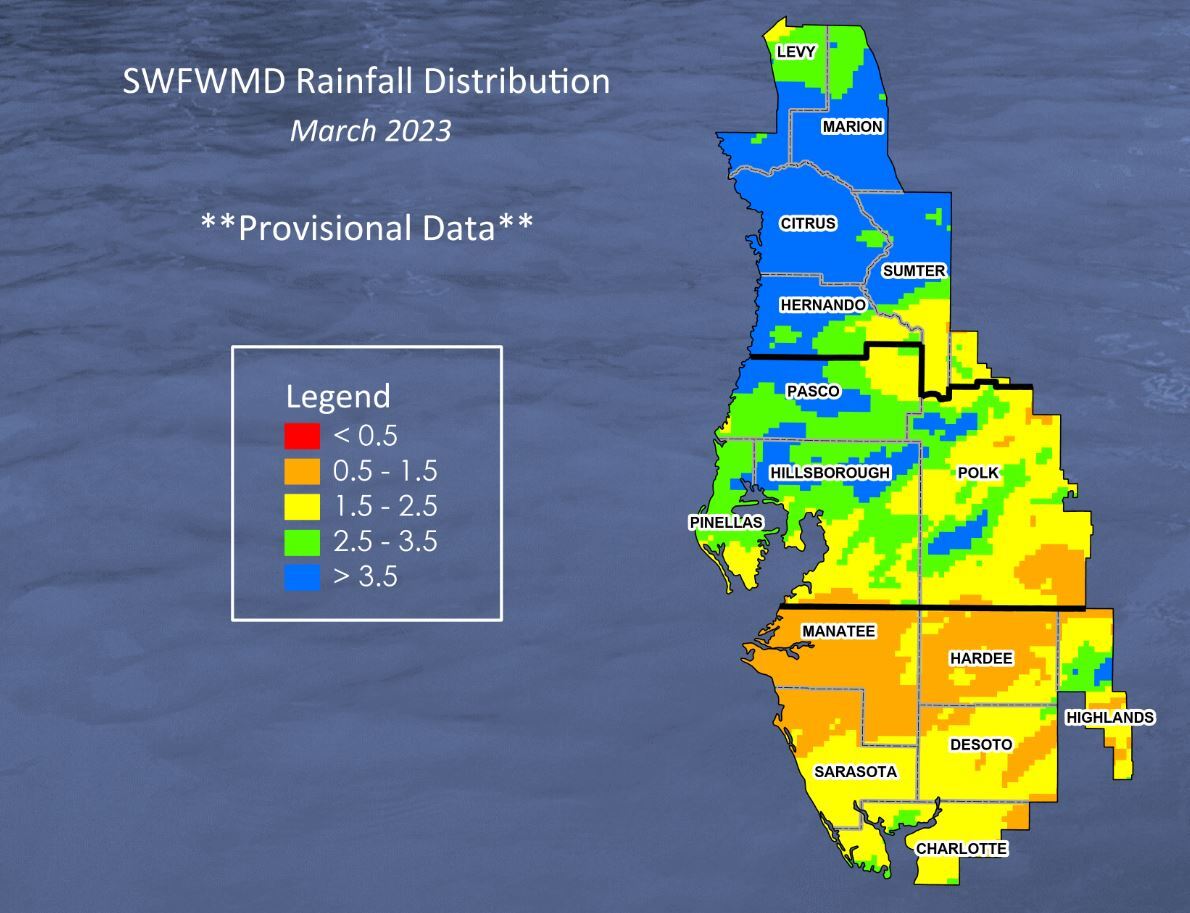
One of the many springs that provide flow to the Withlacoochee River (March 2024)
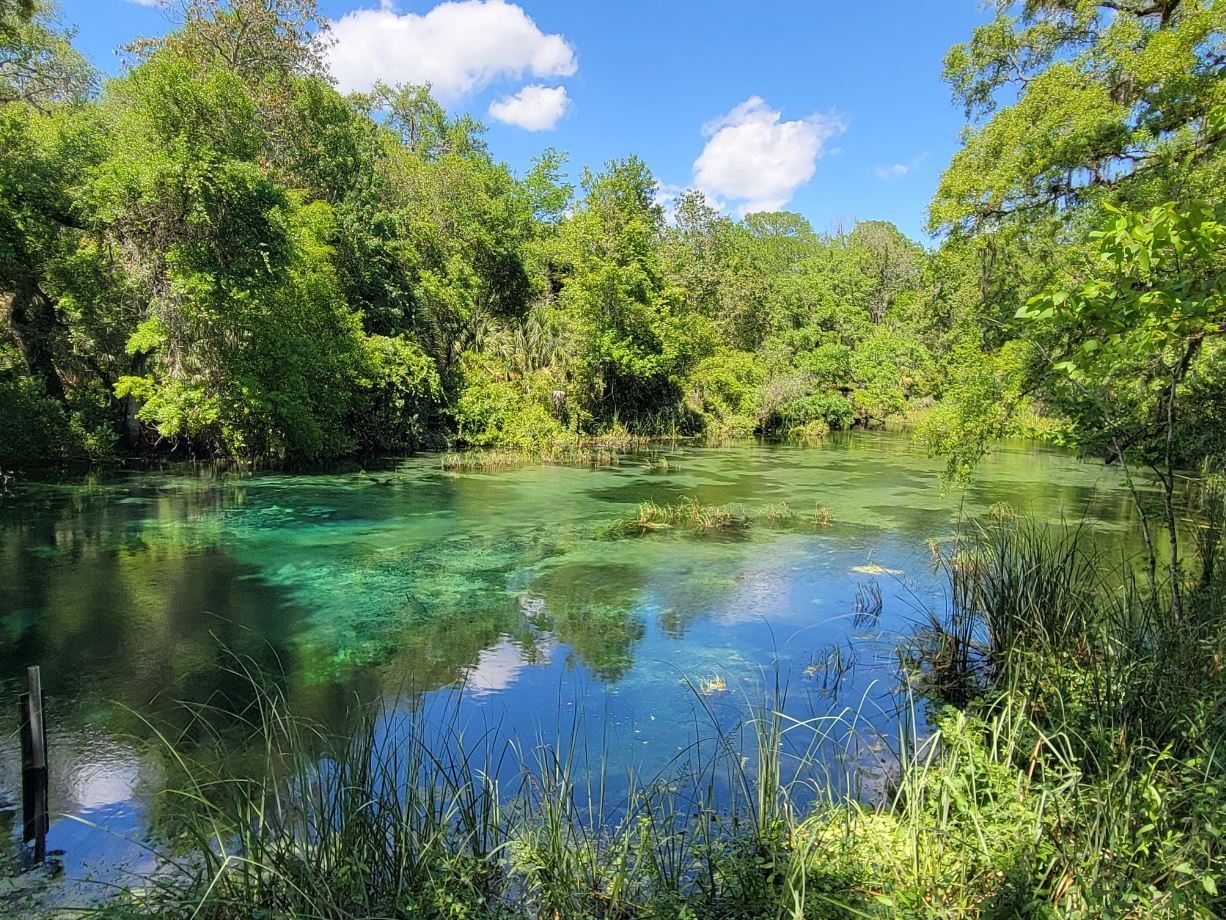
Withlacoochee River (from the Green Swamp downstream past Hwy 200):
- The name “Withlacoochee” is derived from a Creek Indian word (We-thalko-chee) meaning “Little-Big-Water”.
- The region’s early inhabitants understood the river would flood or dry out depending on how much rainfall the area received.
- This year, water levels and stream flows along the Withlacoochee River are substantially higher than they were a year ago, contrasting a stark difference between 2024 and 2023.
- With much more rain this winter, river levels are currently more than a foot higher than they were last April.
- And the Withlacoochee River is now averaging nearly three times more flow than it had a year ago at this time.
- By no means is the river high right now, but it is above average for this time of year.
- We’ll likely see the river drop in April and May, the warmest two months of our dry season, unless our region receives high rainfall.
- For now, we still have decent flow leaving the Green Swamp (where the river begins).
- Overall, the river is in great shape as springtime arrives.
- The table below compares current river levels and flows to what they were last month and last year.
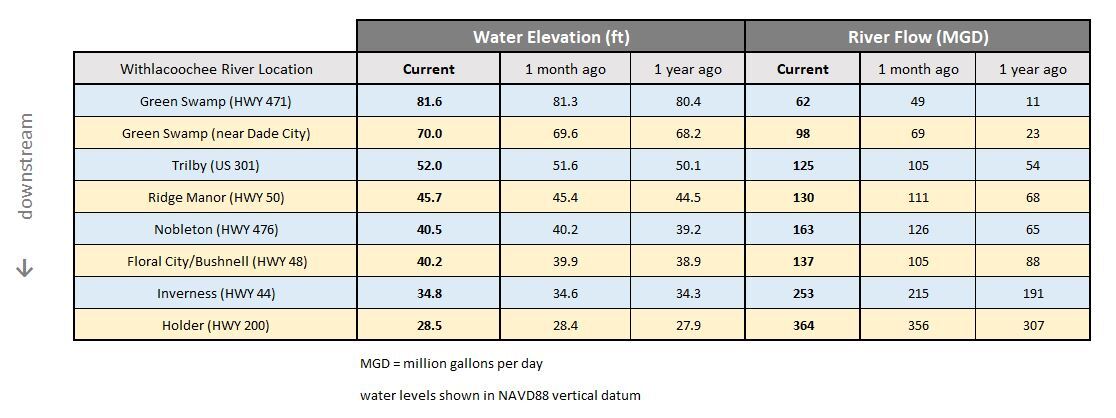
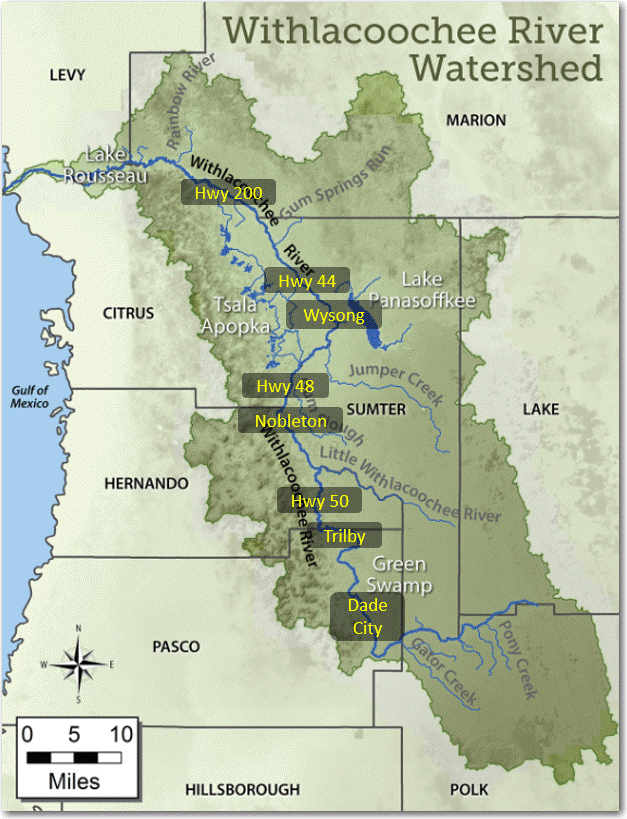
My daughter (Claire) caught this Withlacoochee River largemouth during Spring Break (March 2024)
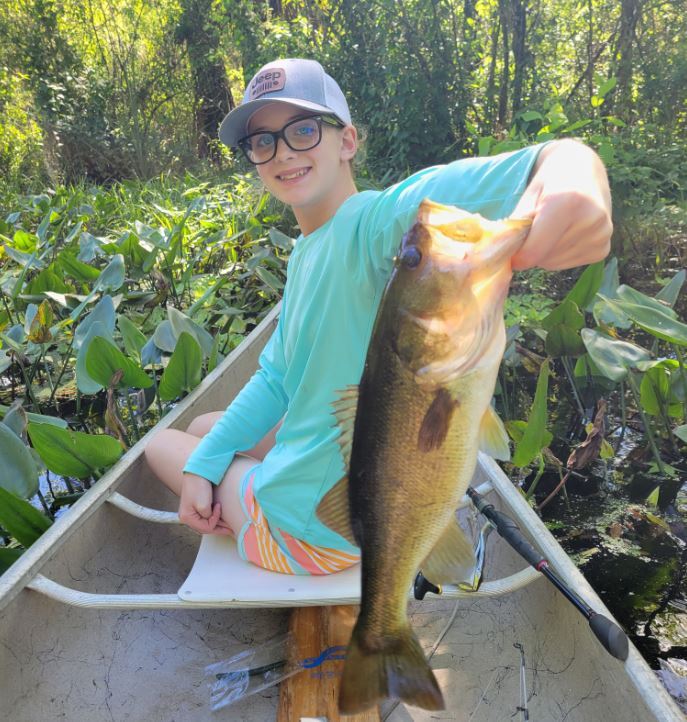
Tsala Apopka Chain of Lakes:
- Water levels rose last month in all three pools of the Tsala Apopka Chain of Lakes.
- At a time of year when the lakes normally decline, they increased again in March due to good rainfall and continued inflow from the Withlacoochee River.
- Since mid-November, the Floral City, Inverness, and Hernando Pools have risen an average of 1.3 feet.
- Water control structures have been open all winter, bringing in available river water and splitting it between all three pools of the lake chain.
- The Withlacoochee River has now peaked from recent rainfall and is barely above the level of the lakes.
- Over the next couple days, as river levels continue to drop, we anticipate closing the structures to help conserve water in the lake chain.
- All three pools are currently higher than they were a year ago.

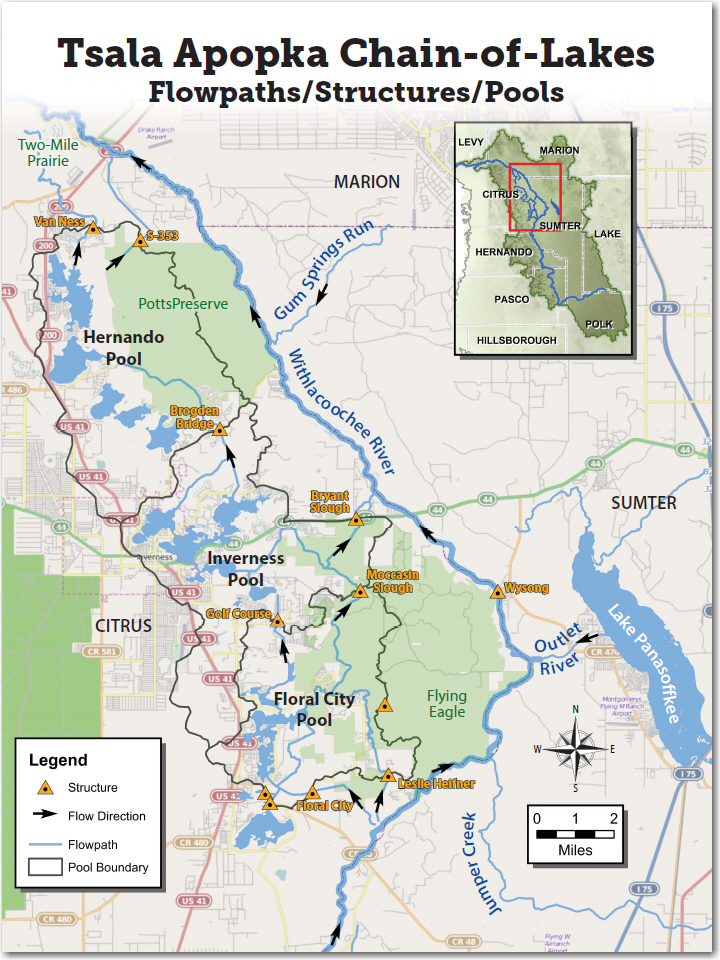
Measuring flow at the Moccasin Slough Structure (March 2024)
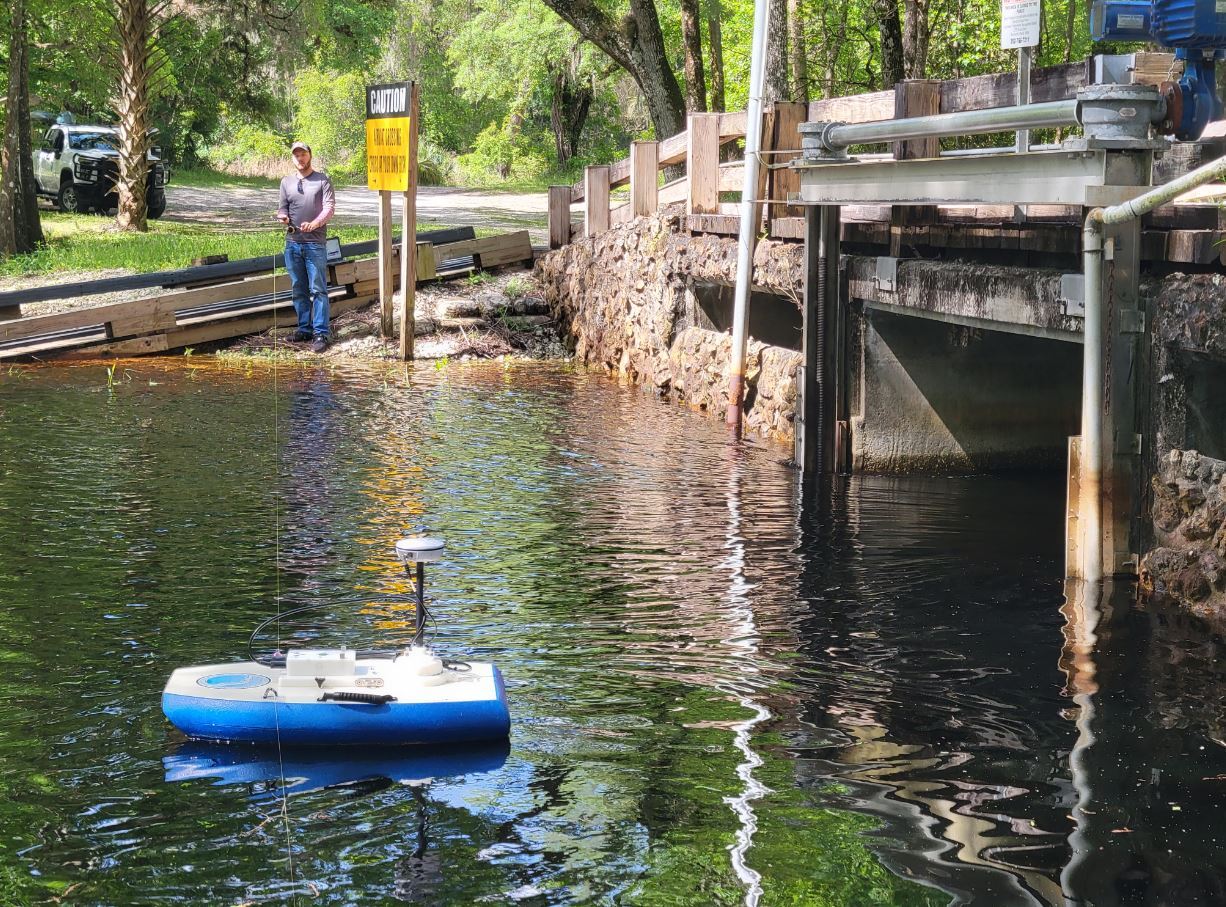
Lake Panasoffkee and Wysong:
- Rainfall near Lake Panasoffkee was about average in March.
- But it was enough to maintain good flows in Little Jones Creek and Shady Brook, which provide a continuous flow of water into Lake Panasoffkee.
- The lake rose 2.5 inches last month, the fifth month in a row it has increased, except for January when levels held steady.
- This rise in water level is abnormal for the dry season (Oct to May), but it’s understandable knowing how much rain we’ve received in recent months.
- The spring-fed creeks are currently moving three times as much water into Lake Panasoffkee, as compared to last year at this time.
- The lake is now 16 inches higher than it was a year ago.
- Outflow, from Lake Panasoffkee to the Withlacoochee River, is currently four times higher than last April, due to higher lake levels this year.
- A few miles downstream along the Withlacoochee River, the Wysong Structure remains partially inflated.
- The main gate (230-ft-wide) at Wysong is fully raised.
- The independent gate (19-ft-wide) remains partially raised, allowing river flows to pass downstream.

Lake Rousseau and the Lower Withlacoochee River (from Dunnellon to the Gulf of Mexico):
- Downstream from Dunnellon, the Withlacoochee River is influenced by water control structures on Lake Rousseau.
- Inflow to Lake Rousseau includes combined flows from the Withlacoochee and Rainbow Rivers.
- Rainbow River flow (which reflects changes in aquifer levels) declined by 1% in March but is currently 8% higher than a year ago.
- Withlacoochee River flow (which depends on rainfall and runoff from adjacent lands) is more than double what it was last April.
- Overall, inflows to Lake Rousseau are 49% higher than they were a year ago, due to higher rainfall this dry season.
- The Rainbow River is currently providing more than half of the total flow entering Lake Rousseau.

- The primary outlet from Lake Rousseau is through the Inglis Bypass Spillway to the Lower Withlacoochee River (see maps below).
- When the Bypass Spillway reaches its capacity, the Inglis Main Dam is opened to discharge excess flows to the Barge Canal.
- Currently, the Bypass Spillway is flowing at around 75% of its 900 MGD capacity, which is 79% more flow than a year ago.
- The Inglis Main Dam remains closed and won’t be open again until the Bypass Spillway reaches its capacity.
- Freshwater flow from Lake Rousseau to the Lower Withlacoochee River declined by 2% in March.

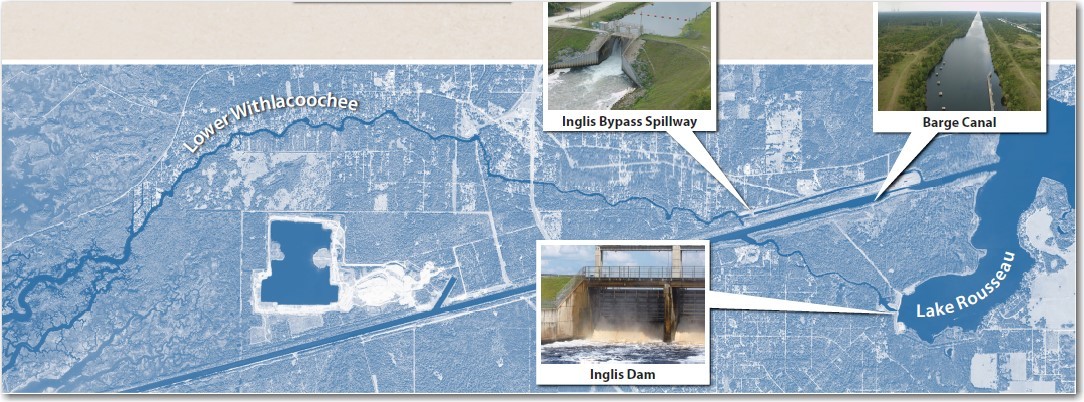
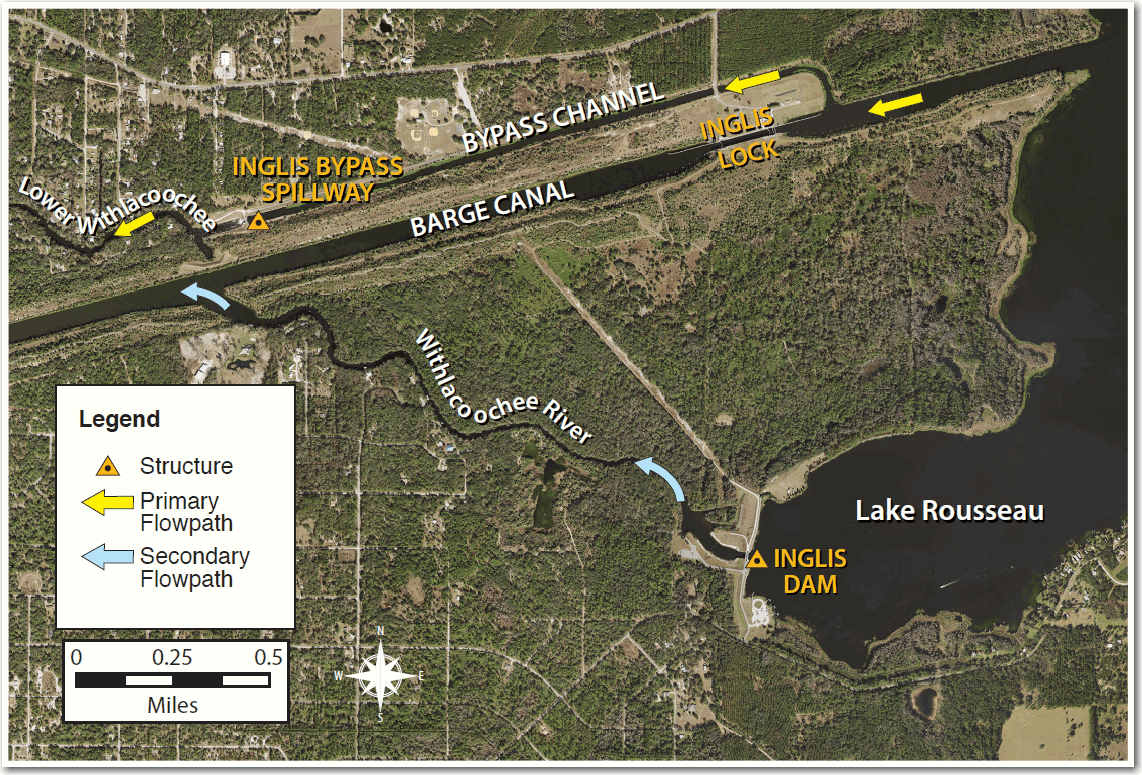
Hope you have a wonderful week!
Mark
Mark Fulkerson, Ph.D., P.E.
Chief Professional Engineer
Water Resources Bureau
Southwest Florida Water Management District
(352) 269-6073 (office)
(352) 279-4493 (cell)

